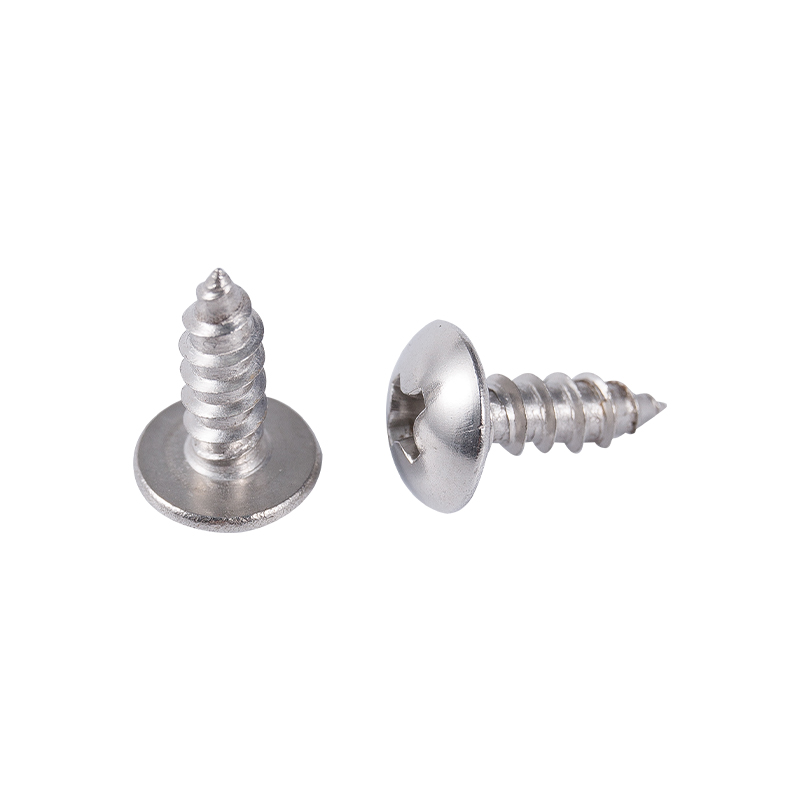ZKL Series 650℃ Liquid Nitriding Furnace
Cat:Industrial Furnace
ZKL series 650℃ liquid nitriding furnace is suitable for surface treatment and p...
See DetailsAs a versatile and durable fastener, stainless steel self-tapping screws have become the preferred choice for many industrial and household applications. They can cut their own threads directly into materials, eliminating the need for pre-drilling and greatly simplifying the installation process. This not only saves time but also reduces labor costs. Due to their exceptional corrosion resistance, stainless steel screws are particularly suitable for humid or chemically corrosive environments, such as marine, construction, and outdoor furniture applications.
Choosing the right screw material and type is crucial for ensuring its performance and longevity. Stainless steel screws are mainly divided into two categories: martensitic stainless steel and austenitic stainless steel. Martensitic stainless steel, such as grade 410, offers excellent hardness and strength, making it ideal for applications requiring high torque, such as fastening metal sheets. However, its corrosion resistance is slightly inferior to that of austenitic stainless steel. In contrast, austenitic stainless steel, such as grades 304 and 316, is renowned for its superior corrosion resistance, especially in chloride environments. Grade 316 stainless steel, also known as "marine grade," is particularly resistant to saltwater and is often used in coastal and marine engineering projects.
When selecting self-tapping screws, several factors need consideration. First is the head shape of the screw, with common types including flat head, pan head, and hex head. Flat head screws can be installed flush with the material's surface, providing a smooth appearance. Pan head screws offer a larger bearing surface, while hex head screws are widely used in heavy-duty structures due to the ease of applying torque. Secondly, it is essential to choose the appropriate stainless steel grade based on the application environment. For dry or indoor environments, grade 304 is usually sufficient. In contrast, for humid, rainy, or high-salt environments, grade 316 is a safer bet.
The versatility of stainless steel self-tapping screws allows them to play a vital role in a wide range of applications. In the construction industry, they are often used to connect metal roofing, wall panels, and ventilation systems, ensuring the structure's stability and durability. In woodworking and furniture manufacturing, these screws are the ideal choice for joining wooden components, installing hinges, and mounting slides. Their self-tapping ability can prevent wood from splitting and provides a secure connection.
Furthermore, outdoor furniture and landscape design heavily rely on stainless steel self-tapping screws. Since these products are exposed to the elements, the corrosion resistance of the screws is paramount. Whether assembling a garden bench, an outdoor dining table, or building a wooden deck, stainless steel screws ensure long-term stability and aesthetics. In marine and naval engineering, the demand for corrosion-resistant fasteners is extremely high. Grade 316 stainless steel self-tapping screws, due to their superior resistance to saltwater, are widely used for installing boat fittings, deck equipment, and underwater structures, ensuring the safety and reliability of vessels in harsh marine environments.
Stainless steel self-tapping screws and regular screws have significant differences in their installation methods and applications. Regular screws require pre-drilling and tapping, which is often a time-consuming process that requires more tools. In contrast, self-tapping screws combine drilling and tapping functions, greatly simplifying the workflow. This makes them more advantageous in situations requiring fast and efficient installation.
However, self-tapping screws also have their limitations. Due to their specific design, they are generally not suitable for applications that require frequent disassembly and reassembly, as repeated use can wear out the threads in the material. In heavy-duty applications that demand extremely high load-bearing capacity or precise thread engagement, regular screws paired with nuts and washers may provide a more reliable connection. Therefore, the choice of screw ultimately depends on the specific project needs. If your project prioritizes installation efficiency and convenience and does not require frequent disassembly, stainless steel self-tapping screws are the ideal choice. If your project requires maximum load-bearing capacity and repeatability, regular screws may be more suitable.
Choosing stainless steel self-tapping screws is not just about selecting a fastener; it's an investment in long-term durability and cost-effectiveness. Although the initial cost of stainless steel screws may be higher than that of ordinary carbon steel screws, their superior corrosion resistance means a longer service life and less maintenance. In humid, rainy, or chemically corrosive environments, ordinary screws can rust and fail quickly, requiring frequent replacement. This not only increases maintenance costs but can also lead to structural safety issues.
In the long run, stainless steel screws resist environmental erosion and maintain their structural integrity, thereby avoiding expensive repairs or replacements caused by fastener failure. This "one-time investment, long-term benefit" model makes them a more economical choice in many critical applications. For projects that prioritize long-term stability and low maintenance costs, stainless steel screws are undoubtedly the wiser decision.
